Charleston Currents #11.36 | July 22, 2019
PALE BEAUTY. All over the Lowcountry, zinnias are popping in flower gardens, bringing flashes of brilliant color as the temperatures soar. This pale beauty unfolded this week in the midst of sisters of red, fuchsia, orange, light green, white and more. Enjoy fresh cut flowers while you can!
EDITOR’S NOTE: Our next issue will be Aug. 5, 2019.
FOCUS: Magnolia to present Aug. 20 program to help bridge generation gap
COMMENTARY, Brack: Griffin, henchmen should pay for stupid $50,000 audit
IN THE SPOTLIGHT: Charleston Gaillard Center
GOOD NEWS: Ports Authority continues bullish growth
FEEDBACK: USC board the problem, not Caslen
MYSTERY PHOTO: Space-rockety sculpture
S.C. ENCYCLOPEDIA: University of South Carolina
CALENDAR: Check out coming events
FOCUS: Magnolia to present Aug. 20 program to help bridge generation gap
Staff reports | Neal Glatt, a nationally-recognized workplace team coach, will show young and old mid-level managers Aug. 20 how to effectively bridge the generation gap to solve “people problems” in the office environment.
This four-hour workshop at Magnolia Plantation and Gardens is being offered to help Baby Boomers and Gen. Xers understand how to collaborate with Millennials as they rise to management positions, Glatt said in a press release.
Tom Johnson, Magnolia’s executive director, invited Glatt to Magnolia. Earlier this year, Johnson attended Glatt’s presentation at the Gulf States Horticulture Expo in Mobile, Ala.
“I was enthralled by Neal’s presentation,” Johnson said. “He outlined common-sense approaches to help managers communicate effectively with Millennials and understand how they view themselves in today’s workplace.”
The sessions will begin at 1 p.m. in Magnolia’s Carriage House. The deadline to register is Friday, Aug. 16. Call 843-571-1266, extension 220. The fee is $20.
During the session at Magnolia, Glatt will reveal what people really seek in a career and the six fundamentals shifts in thinking required to conquer the generational divide.
“When Baby Boomers, Gen Xers and Millennials learn to work together, it is possible to turn changing dynamics into a significant competitive advantage,” Glatt said.
In related news about Magnolia Plantation and Gardens, the attraction freed more than 200,000 ladybugs on July 20 during its sixth annual Ladybug Release. The beetles help to control other harmful insects, such as aphids and scale insects, throughout the garden. The release also is designed to teach children how they can help preserve and protect the environment. This event featured exhibits including nature displays, interactive activities, environmental organizations and face painting.
- Have a comment? Send to: editor@charlestoncurrents.com
BRACK: Griffin, henchmen should pay for stupid $50,000 audit
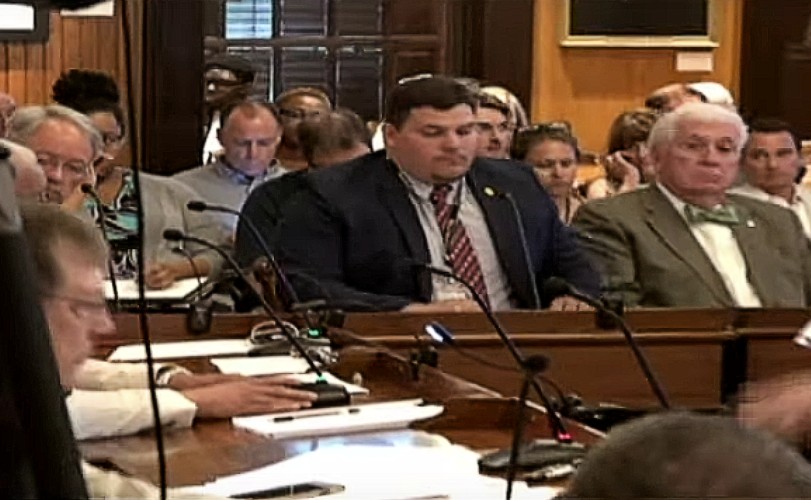
From left: Mayor John Tecklenburg (top left) and councilmen Harry Griffin and Bill Moody at audit meeting.
By Andy Brack, editor and publisher | In 35 years of attending and covering public meetings from rural towns to major halls of power, I’ve never encountered a stupider meeting than last week’s audit committee of Charleston City Council.
 Apparently, the point by various city councilmen who want to be mayor (those running and those who are puppeteers) was to find something awry in spending by Charleston Mayor John Tecklenburg and his office. Unfortunately for these baldly political operatives working against the common good, the draft findings of the $50,000+ audit were a nothingburger — nothing worth wasting any time over and no evidence of intentional wrong-doing. Sure, there may have been some administrative oversights, but there was nothing in the audit worth spending more than an average city employee’s annual salary.
Apparently, the point by various city councilmen who want to be mayor (those running and those who are puppeteers) was to find something awry in spending by Charleston Mayor John Tecklenburg and his office. Unfortunately for these baldly political operatives working against the common good, the draft findings of the $50,000+ audit were a nothingburger — nothing worth wasting any time over and no evidence of intentional wrong-doing. Sure, there may have been some administrative oversights, but there was nothing in the audit worth spending more than an average city employee’s annual salary.
This whole ugly episode was a bogus attempt by Nerf mayoral candidate and bully of a councilman, Harry Griffin, to try to “get” Tecklenburg. Let’s hope it backfires and sends his piddly campaign into the gutter. Better yet: Perhaps he should resign for embarrassing everyone involved and showing how completely inept he is.
The whole mess got started when nimrods on council called for an audit to get behind why the name of the mayor’s wife was printed on his business cards. She, they said, wasn’t a city employee. Why should the city have spent $10 on that printing?
Then it devolved. Draft “findings” after a two-month audit by a very eager beaver found nothing related to the mayor’s office worth writing home about — some business cards ordered, some travel expenses late, some forms not filled out properly. The findings complained that the city paid $1,000 to fund a party to honor 90-year-old jazz saxophonist Lonnie Hamilton III and to pay for an ad promoting it. So what? Hamilton is a Lowcountry treasure and it’s fully appropriate for the city of Charleston — which enjoys his music during Piccolo Spoleto — to give him the key to the city.
To highlight how silly and time-wasting the whole episode has been, listen to the words of Columbia attorney Michael R. Burchstead, who was brought in to review the draft findings and whether there were any state ethics law violations:
“I found no self-dealing by the Mayor or any actions or conduct showing the Mayor or Mrs. Tecklenburg have personally financially benefitted [sic] from their actions. No action of Mayor Tecklenburg or his family appears to be borne out of desire to use the Office of the Mayor for financial gain, but rather they appear to be motivated by their interest in representing the citizens of the City.”
The above summary likely was a blow to Griffin and his co-conspirators. More than likely, they’ve been spending hours since last week’s meeting trying to figure out how to spin the draft findings to their advantage when the final report is released later this week.
Stop wasting our time. Tecklenburg’s foes knew they wouldn’t find much. They were just trying to embarrass the mayor. Instead, they need to start picking the egg off their faces and get down to city business. Better yet: Citizens should demand that they pay for the audit.
Run, Mark Sanford, run
Our most recent Statehouse Report commentary focused on the possibility of a presidential campaign by former S.C. Gov. and U.S. Rep. Mark Sanford, who is in a dither because of the country’s growing $22 trillion debt:
“Rather than toying with a direct run against Trump, he’d be better suited to emulate the 1992 campaign of Ross Perot, who passed away earlier this month. The billionaire maverick snared almost 19 percent of the popular vote by talking in frank, easy-to-understand language about – guess what — government spending and debt. While Perot didn’t win any electoral votes, he changed the trajectory of the 1992 race and made it possible for Bill Clinton to beat incumbent George H.W. Bush at the polls.
“If Sanford runs for president as a Republican, he’ll lose in a heartbeat. He’ll be a blip on the screen because his Republican Party is gone. No longer the party of limited government and fiscal conservatism, it’s been drowned in a Norquistian bathtub by the blustering party of Trump where milquetoasts and yes-men thrive in a lapdog splendor, doing nothing for regular Americans.
“As an independent presidential candidate, Mark Sanford can stretch his anti-debt message through November 2020 and make a much bigger impact than getting drowned in a tsunami of red-hat-wearing Trump lemmings who won’t hear what he’s saying. As an independent, he could be a spoiler like Perot and get the whole country focused on something important — the national debt that is slowly crippling us.” Read the full commentary here.
Andy Brack’s new book, “We Can Do Better, South Carolina,” is now available for $14.99 in paperback via Amazon.
- Have a comment? Send to: editor@charlestoncurrents.com
SPOTLIGHT: Charleston Gaillard Center
 Charleston Gaillard Center provides the Lowcountry with a world-class performance hall, elegant venue space and vibrant educational opportunities that inspire dynamic community throughout the area through the power of the performing arts. The Center’s vision is to enrich the diverse community of Charleston with artistic and cultural experiences that are accessible and unique, and to serve as an educational resource for generations to come.
Charleston Gaillard Center provides the Lowcountry with a world-class performance hall, elegant venue space and vibrant educational opportunities that inspire dynamic community throughout the area through the power of the performing arts. The Center’s vision is to enrich the diverse community of Charleston with artistic and cultural experiences that are accessible and unique, and to serve as an educational resource for generations to come.
Did you know that the Charleston Gaillard Center is a 501c3 non-profit that works with over 25,000 students each year from the tri-county area? Promoting education is one of the core values of the Charleston Gaillard Center and an integral part of our mission. By broadening the reach of arts-education in the Lowcountry the Gaillard Center encourages learning through the arts and serves as a powerful tool for student achievement and personal development while providing people of all ages with the opportunity to cultivate and grow their talents and appreciation for the arts. To learn more about our education initiative, click here: www.gaillardcenter.org/outreach.
For more information, click the links below:
- Buy tickets and see our great events
- Become a member today
- Plan your event at the Charleston Gaillard Center
- Learn about our education and community programs
- Contact the Gaillard Center.
- To meet all of our underwriters, click here.
Ports Authority continues bullish growth
Staff reports | The S.C. Ports Authority handled record cargo volumes in the fiscal year ending June 30, moving almost 2.4 million twenty-foot-equivalent container units.
“By setting another record for annual cargo volumes, the South Carolina Ports Authority has further established itself as one of our state’s premier economic drivers,” said Gov. Henry McMaster in a press release. “This unprecedented success and growth will continue as we work to complete the Charleston Harbor Deepening Project, which will increase capacity and ensure that Charleston has the deepest harbor on the East Coast by 2021.”
On top of an 8.8 percent growth in moving container cargo, other highlights include success at its two inland ports and rail connections.
Inland Port Greer , now in its sixth year of operation, reported its busiest fiscal year yet with 143,204 rail moves in fiscal 2019, up nearly 22 percent from the prior year. Inland Port Greer reported 14,689 rail moves last month.
Inland Port Dillon, now In its first full year of business, handled around 30,000 rail moves in fiscal 2019.
SCPA’s RapidRail program, which provides a seamless connection between rail yards and marine terminals, saw a record year with more than 330,000 rail moves in fiscal 2019. The port now handles 24 percent of containerized volumes by intermodal container rail — the highest annual percentage in the port’s history.
Downtown terminal. The port handled 18,307 vehicles at Columbus Street Terminal in June for a total of 194,771 vehicles in fiscal 2019. Total breakbulk cargo was 625,323 pier tons for the fiscal year.
Passengers. SCPA saw a total of 213,081 cruise passengers and 1,696 ships docked in fiscal 2019.
“As we head into fiscal 2020, we will continue investing in our infrastructure to handle growth, as well as supporting our employees and the entire maritime community who make these significant achievements possible,” said SCPA CEO Jim Newsome.
In other Good News, some of which isn’t so good:
Big success. Congratulations to East Cooper Community Outreach for pulling in more than $220,000 in donations through its April 22 charity golf tournament and its “A Night to Shine” gala on May 17. More than 150 golfers participated in the tournament on Daniel Island while another 270 people gathered for the gala, according to a press release.
New truck. Food Lion Feeds has donated a new 26-foot refrigerated truck to the Lowcountry Food Bank to help it meet its mission to fight hunger in 10 area counties. “This new, refrigerated truck from Food Lion Feeds eases the hard choices that families are forced to make when they are hungry,” said Pat Walker, LCFB president and CEO. “The truck helps provides our community with equitable access to nutritious food, including fresh produce.”
Big donation. A hat tip to BP, which has announced a $1 million donation to support construction of the International African American Museum, its program and its educational initiatives.
Lack of college board diversity. A Statehouse Report review of South Carolina’s public universities found governing board members are 75.8 percent male and 84.5 percent white — and zero members were of Latino, Asian or Native American ethnicity. Read the full story here.
Bad drug news. A map by the Washington Post last week of Drug Enforcement Administration data showed Charleston County had an average of 248.3 pills per person dispensed per year of opioids from 2006 to 2012. It was the highest number of pills per person in the country. Our sister publication, Statehouse Report, reached out to Charleston County spokesman Shawn Smetana to see if the county was reconsidering joining or filling a prescription drug lawsuit. Smetana said the county’s position has not changed since the publication’s June 28 story.
USC’s board is the problem, not Caslen
To the editor:
![]() The problem with the USC president search is not with the candidate (in this case Lt. Gen. (Ret) Robert Caslen), but with the Board of Trustees. They have presided over perhaps one of the worst-run talent searches in recent memory.
The problem with the USC president search is not with the candidate (in this case Lt. Gen. (Ret) Robert Caslen), but with the Board of Trustees. They have presided over perhaps one of the worst-run talent searches in recent memory.
First, in terms of full disclosure, Bob Caslen is a classmate of mine from West Point. Despite attending West Point and serving in the U.S. Army together for cumulatively 24 years, we have never met – either during or after our “shared” experiences. Nonetheless, I have followed his career and achievements – especially over the last dozen or so years. He is, I believe, an excellent choice for USC president.
That said, Bob Caslen has been subjected to a baseless, almost slanderous, set of criticisms (most of them repeated, without any real understanding of the underlying facts, by members of the press) – none of them reflective of even a modicum of understanding of his experience and broad knowledge of university-level administration.
In counterpoint to such criticisms, I will start with Forbes magazine which, in its 2018 college rankings, placed West Point at #27, while USC was ranked #211. Bob Caslen was superintendent (president) of West Point from 2013 to 2018.
But I digress. My main point and focus is on the shoddy, amateurish selection process orchestrated by the Board of Trustees. As much as I believe Bob’ critics and protesters (a stunningly small number of USC students, faculty and board members) are wrong-headed in their criticisms of Bob, they are right about a very important matter. The Board has failed to conduct a transparent, professional search and selection process. While I can only guess at the reasons for this, the evidence of their failures (which some may call incompetence) is overwhelming.
Sorry for Bob Caslen who, despite all these unjust criticisms and treatment – by both the protesters and board – has remained silent and professional. Sorry for the board and their inept handling of this whole process.
But most of all, I’m sorry for the students and faculty at USC who most likely will be denied the leadership and wisdom of a great academic leader, someone who has demonstrated the type of leadership and mentoring that has bridged differences across generations, as well as across political divides.
I will not blame Bob Caslen one bit if he withdraws his candidacy, or declines the opportunity (if offered). If he does either, I am sure it will not be his fear of being undermined from below by those few who oppose him, but because he cannot have faith that his boss, the Board of Trustees, can be counted on to do the right thing when confronted with hard decisions. At least that is what I believe.
— Robert E. Johnson, Summerville, S.C.
Send us your thoughts
We’d love to get your impact in one or more ways:
Send us a letter: We love hearing from readers. Comments are limited to 250 words or less. Please include your name and contact information. Send your letters to: editor@charlestoncurrents.com. | Read our feedback policy.
Tell us what you love about the Lowcountry. Send a short comment – 100 words to 150 words – that describes something you really enjoy about the Lowcountry. It can be big or small. It can be a place, a thing or something you see. It might the bakery where you get a morning croissant or a business or government entity doing a good job. We’ll highlight your entry in a coming issue of Charleston Currents. We look forward to hearing from you.
Space-rockety sculpture
We spied this sculpture recently somewhere in Charleston County. It might be a little tough to identify, but if you can, where is it? For bonus points, what in the world is it? Send your guess to editor@charlestoncurrents.com. And don’t forget to include your name and the town in which you live.
Our previous Mystery Photo
Our July 15 mystery, “Old brick church,” showed St. Stephen’s Episcopal Church in Berkeley County’s appropriately named St. Stephen, S.C. (Which came first, the church or the town?)
Thanks to Bill Segars of Hartsville for providing the great photo of the Georgian church, first built in 1767. And congratulations to these sleuths who figured out the mystery: Chris Brooks of Mount Pleasant; George Graf of Palmyra, Va.; Reginald G. Mixon of Moncks Corner; Stephen Yetman, now of Savannah; Marnie Huger of Richmond, Va.; Jay Altman of Columbia; and Evan D. Cook of James Island.
Extra kudos to Graf, Mixon and Huger for guessing on the construction cost, which Segars said was 1,000 pounds sterling. Graf guessed 1,600 pounds sterling, compared to Mixon’s $1,500 and Huger’s 4,000 pounds sterling.
We enjoyed this from Huger: “The church was originally built of wood in 1754, but the brick structure was started in 1767. It’s a small Georgian country chapel, and only one of 125 colonial Episcopal churches still in use in the U.S. According to parish records it was made of 150,000 bricks made and supplied by Charles Cantey, although the National Register credits Francis Villepontoux and A. Howard for supplying them.
“I really don’t know the cost, but I’m going to guess it cost about 4,000 pounds sterling in 1767 since I think that’s about what Punkin Hill [also known as Pompion HIll] cost. 1,000 pounds in 1767 = $164,915 today, so 4,000 pounds would be around $660,000 in today’s money.”
Graf provided this additional context: The famous Dr. Francis Peyre Porcher, MD, LLD was buried here in 1895. He was a well-known herbalist and leader in the CSA medical corps. He was assigned by the Surgeon General of the Confederate Medical corps (Dr. Sam P. Moore) to pen a book on regional herbs and plants for the Confederacy to utilize as the blockade during the Civil War by the North was hurting efforts to supply needed medication for the Southern effort. He went on to do great things post-war as well. MUSC (teaching hospital in Charleston, SC) has a living memorial garden to Dr. Porcher.”
- Send us a mystery: If you have a photo that you believe will stump readers, send it along (but make sure to tell us what it is because it may stump us too!) Send it along to editor@charlestoncurrents.com.
HISTORY: University of South Carolina
S.C. Encyclopedia | The institution was originally chartered as South Carolina College on December 19, 1801. Its establishment was a response to the changing political landscape in the Palmetto State at the outset of the nineteenth century. South Carolina’s political leaders saw a new college as a way of bringing together the sons of the Federalist elite of the lowcountry with the sons of the upcountry Jeffersonians in order, in the words of the college charter, to “promote the good order and harmony” of the state.
It was intentionally sited in the relatively new capital city of Columbia to demonstrate independence from the influence of Charleston interests. Chartered by the General Assembly with an initial appropriation of $50,000, South Carolina College got under way remarkably quickly. In little more than three years of planning and preparation, the board of trustees hired a distinguished president and a faculty, established a curriculum, and constructed the first building on the new campus. Located a short distance southeast of the State House, the college opened on January 10, 1805, and in subsequent years enjoyed the generous annual support of the General Assembly, an unusual luxury for a state college in that era.
South Carolina College provided students a cosmopolitan education. Many early faculty members, as well as the college’s curriculum and rules governing student behavior, were drawn from the leading New England universities of the time.
By the end of the antebellum era, the institution stood as a bulwark of conservatism. The curriculum was a traditional classical one, focusing primarily on the study of literary works in Latin and ancient Greek and emphasizing the mastery of oratory. Boasting a distinguished faculty, a handsome campus, the latest scientific equipment, a large library, and generous public funding, South Carolina College ranked as one of the nation’s premier institutions of higher education, and it educated most of the state’s antebellum elite.
Then disaster struck. South Carolina’s secession unleashed the devastation of the Civil War, and South Carolina College paid dearly. In 1862 the institution was forced to close for want of students, and its buildings served as a military hospital during wartime. In 1866 state leaders revived the institution with ambitious plans for a diverse University of South Carolina. However, with a nearly empty state treasury, the university that emerged was barely a shadow of its former self. For the next century the institution struggled to regain the status it had once held.
After the war the political controversies of Reconstruction buffeted the university. In 1869 the Republican General Assembly elected the first African American trustees, and in 1873, when Republicans insisted that black students be admitted, influential faculty resigned and the state’s white elite largely abandoned the institution. The school’s first black students enrolled that year, as did the first black faculty member, Harvard graduate Richard T. Greener. Between 1873 and 1877 the institution was racially integrated and was the only southern state university to admit and grant degrees to black students during Reconstruction.
In 1877, members of South Carolina’s white leadership, led by Governor Wade Hampton, closed the institution to purge it of the Republican influences that they believed had sullied it. They reopened it in 1880 as an all-white Morrill Land Grant Institution: the South Carolina College of Agriculture and Mechanics. This institution thereafter became caught in the political upheaval of the last two decades of the nineteenth century. It went through several reorganizations in which the curriculum frequently changed and its status shifted from college to university and back again. During a brief period in the mid-1880s, it made significant strides toward regaining its antebellum glory, but again outside forces intervened to lower the college’s status.
The low point came in the late 1880s when Benjamin R. Tillman harshly attacked the institution. Tillman was the champion of those in South Carolina who thought the state should support an agricultural college, not a liberal arts university. Tillman convinced the state to establish Clemson Agricultural College in 1889 as an alternative to the University of South Carolina. In 1890 South Carolina’s voters elected him governor. Tillman stirred up class resentments and made attacking the university a central part of his program, calling it “the seedbed of the aristocracy” and promising to close it forever. Although he never followed through on his threats, the attacks crippled the institution. Enrollment fell to just sixty-eight students in 1893–1894, and in 1895 the institution’s entire book budget was only $71.
By the late 1890s the institution, again with the name South Carolina College, began a slow recovery from neglect. Women were admitted for the first time in 1895, and in the first decade of the twentieth century the curriculum was broadened. Enrollment began a slow rise, and the state rechartered the college as a university for the final time in 1906.
In the early part of the new century, the University of South Carolina struggled to compete for funding with five other state colleges (Clemson, Winthrop, the Citadel, the State Medical College, and the Colored Normal, Industrial, Agricultural and Mechanical College—later known as South Carolina State). A small, poor state, South Carolina simply could not afford to support six separate colleges and maintain a high standard of scholarship at any of them. When the Southern Association of Colleges and Schools (SACS) was founded in 1895, not a single college in South Carolina—public or private—qualified for membership. The University of South Carolina became the first state-supported institution in South Carolina to qualify for SACS membership in 1917.
The outbreak of World War II revived and transformed the university. As students left school in droves to enter the armed forces, the university initiated programs to help train civilians for defense-related industries. In 1943 the campus became home to officer training programs of the U.S. Navy and the trainees filled the dormitories, outnumbering civilian students. In the aftermath of the war veterans filled the campus, expanding the student body to new records and taxing the capacity of campus facilities.
However, the state continued to provide inadequate resources, and the University of South Carolina ranked at or near the bottom in comparisons with its peers in other states. In 1951 trustees named Donald Russell president, and he began a reform program that put the university on the road to recovery. He recruited prestigious faculty, established new academic programs, and revived old ones. With the support of the General Assembly, Carolina began a wide-scale construction program that modernized the campus. To meet the growing demand for higher education, in the late 1950s the institution began establishing regional campuses in communities such as Florence, Conway, and Beaufort.
With increasing levels of state funding and the arrival of the baby boom generation during the 1960s and early 1970s, Carolina grew from a student body of about 5,000 to nearly 25,000. Degree offerings expanded likewise, and under the leadership of President Thomas Jones, graduate education and research received growing emphasis.
Change was constant. The increasing size of the student body was matched with changes in the nature of those students. As the result of a federal court order, on September 11, 1963, Henrie D. Monteith, Robert Anderson, and James Solomon became the first of an ever-growing number of African American students to enroll at the university in the late twentieth century. Increasing numbers of international students came to Columbia as well.
In the late 1970s and 1980s, the university’s physical growth slowed but new degree programs and schools and colleges such as the College of Criminal Justice, the medical school, the College of Library Science, and the undergraduate Honors College helped expand educational opportunities. Renovations of older areas such as the Horseshoe ensured that the historic heart of the campus survived. Private fund-raising became a priority as state funding continued to lag behind growth, and the university emphasized international programs that attracted national attention. The quest for national recognition briefly stumbled when the university’s aggressive president James B. Holderman was driven from office in 1990 in the wake of a highly publicized spending scandal.
In the 1990s the University of South Carolina continued the drive for national recognition, emphasizing increased levels of faculty research and outside research funding. In 2001 the institution celebrated a legacy of two hundred years of educating South Carolinians by dedicating itself to continued improvements in the quality of service it offers to the Palmetto State. In 2001 the institution celebrated a legacy of two hundred years of educating South Carolinians by dedicating itself to continued improvements in the quality of service it offers to the Palmetto State.
— Excerpted from an entry by Henry H. Lesesne. This entry may not have been updated since 2006. To read more about this or 2,000 other entries about South Carolina, check out The South Carolina Encyclopedia, published in 2006 by USC Press. (Information used by permission.)
CALENDAR: Lots of great events ahead for late July, August
![]() Lee Barbour Trio: 6 p.m. July 24, Gibbes Museum of Art, 135 Meeting St., Charleston. Talented guitarist Lee Barbour will lead a trio to open the third annual Art of Jazz Series, a project of the museum and Charleston Jazz. Tickets are $25. Learn more about this and other shows through this link.
Lee Barbour Trio: 6 p.m. July 24, Gibbes Museum of Art, 135 Meeting St., Charleston. Talented guitarist Lee Barbour will lead a trio to open the third annual Art of Jazz Series, a project of the museum and Charleston Jazz. Tickets are $25. Learn more about this and other shows through this link.
Me and My Girlfriend reception: 5 p.m. to 8 p.m., July 26, Redux Contemporary Art Center, 1056 King St., Charleston. The reception is for a two-person exhibit featuring the work on HNin Nie and Grace Stott that will be on display through September 13. The exhibit examines the interconnectivity and parallels between the work of two distinct creative practices, according to a press release. More info.
John’s Island Book Sale: Starts at 9 a.m. on July 26 and 27, John’s Island Regional Library, 3531 Maybank Highway, Johns Island. John the Charleston Friends of the Library to browse through more than 10,000 gently-used books, CDs, DVDs, and audio books at prices that can’t be beat.More info: www.CharlestonLibraryFriends.org.
Events at the Gaillard. Check out these awesome coming events at the Charleston Gaillard Center, 95 Calhoun St., Charleston:
Jennifer Holliday: 4 p.m. Aug. 2. The Grammy and Tony award-winning singer and actor, Jennifer Holliday, shows her amazing voice for a one-hour singing performance to close out the 2019 Lowcountry Mental Health Conference. She will also be taking time to share her personal story and struggles with depression while talking about the work she is doing to bring awareness to mental health issues. Tickets are $28.
Lowcountry Jazz Fest: Aug. 30 to Sept. 1, The All White Party Affair, set for Aug. 30 from 7:30 p.m. to 11 p.m.,will feature Grammy-nominated soul slinger Anthony David. Tickets are $85. The next evening at 7:30 p.m. is Day One of the festival, which will include several artists: The Sax Pack. Richard Elliott, Peter White, Keiko Matsui, DW3 and the West Coast Jam Horns. Tickets are $68 to $153. At 7:30 p.m. Sept. 1, DAy Two starts including Dave Koz and Friends Summer Horns with Gerald Albright, Rick Braun, Kenny Lattimore and Aubrey Logan; Marion Meadows; Kirk Whalum; and Jonathan Butler. Tickets are $68 to $153.
Early morning bird walks at Caw Caw: 8:30 a.m. every Wednesday and Saturday, Caw Caw Interpretive Center, Ravenel. You can learn about habitats and birds, butterflies and other organisms in this two-hour session. Registration is not required, but participants are to be 15 and up. $10 per person or free to Gold Pass holders. More: http://www.CharlestonCountyParks.com.
AREA MARKETS
TUESDAYS. The Mount Pleasant Farmers Market is every Tuesday from 3:30 p.m. to 7 p.m. at the market pavillion at Moultrie Middle School, 645 Coleman Blvd., Mount Pleasant. Free parking. Lots of activities. More info.
WEDNESDAYS. The West Ashley Farmers Market is every Wednesday from 3 p.m. to 7 p.m. in Ackerman Park off Sycamore Avenue in West Ashley. The last week of the market will be the first week of October. More.
FRIDAYS/SATURDAYS: Night Market. Every Friday and Saturday from 6:30 p.m. to 10:30 p.m. for the rest of the year, you can shop with 108 vendors, including artists and craftsmen, at the night market on Market Street between East Bay and Church streets. It’s more than four blocks of local shopping and fun. Free.
SATURDAYS: Johns Island Farmers Market operates each Saturday from 9:30 a.m. to 1:30 p.m. year-round with more than 50 local farmers and vendors, food trucks, music and more. The market is located on the campus of Charleston Collegiate School, 2024 Academy Road, Johns Island
SATURDAYS: The Charleston Farmers Market is open 8 a.m. to 2 p.m. in Marion Square each Saturday through Nov. 30. More info.
- If you have an event to list on our calendar, please send it to feedback@charlestoncurrents.com for consideration. The calendar is updated weekly on Mondays.
If you like what you’ve been reading, how about considering a contribution so that we can continue to provide you with good news about Charleston and the Lowcountry. Interested? Just click the image below.
Now out in paperbrack, err, paperback
We Can Do Better, South Carolina! offers incisive commentaries by editor and publisher Andy Brack on the American South, the common good and interesting South Carolina leaders, such as former U.S. Sen. Fritz Hollings, civil rights advocate Septima Clark, former S.C. Gov. David Beasley and more. There also are discussions on civil rights struggles with which the Palmetto State continues to grapple. as well as commentaries on politics, governments, the hangovers of South Carolina’s past and her future opportunities.
We Can Do Better, South Carolina! is available for $14.99 in paperback or as a Kindle book for $7.99. Click here to purchase your copy. A paperback version will be ready for order isoon.
- If you have a comment or questions about the book, please let us know at: editor@charlestoncurrents.com
OUR UNDERWRITERS
Charleston Currents is an underwriter-supported weekly online journal of good news about the Charleston area and Lowcountry of South Carolina.
- Meet our underwriters
- To learn more about how your organization or business can benefit, click here to contact us. Or give us a holler on the phone at: 843.670.3996.
OUR TEAM
Charleston Currents offers insightful community comment and good news on events each week. It cuts through the information clutter to offer the best of what’s happening locally.
- Mailing address: P.O. Box. 22261 | Charleston, SC 29413
- Phone: 843.670.3996
Charleston Currents is provided to you weekly by:
- Editor and publisher: Andy Brack, 843.670.3996
- Contributing editor, common good, Fred Palm
- Contributing editor, money: Kyra Morris
- Contributing editor, Palmetto Poem: Marjory Wentworth
- Contributing editor, real estate: Digit Matheny
- Contributing photographer: Rob Byko
SUBSCRIBE FOR FREE
Subscriptions to Charleston Currents are free.
- Click here to subscribe.
- Unsubscribe. We don’t want to lose you as a reader of Charleston Currents, but if you must unsubscribe, you will have to do it through the email edition you receive. Just go to the bottom of any of your weekly newsletters and click the “unsubscribe” function. If that doesn’t work, please send us an email with the word “unsubscribe” in the subject line.
- © 2008-2019, Statehouse Report, LLC. All rights reserved. Charleston Currents is published every Monday by Statehouse Report LLC, PO Box 22261, Charleston, SC 29413.


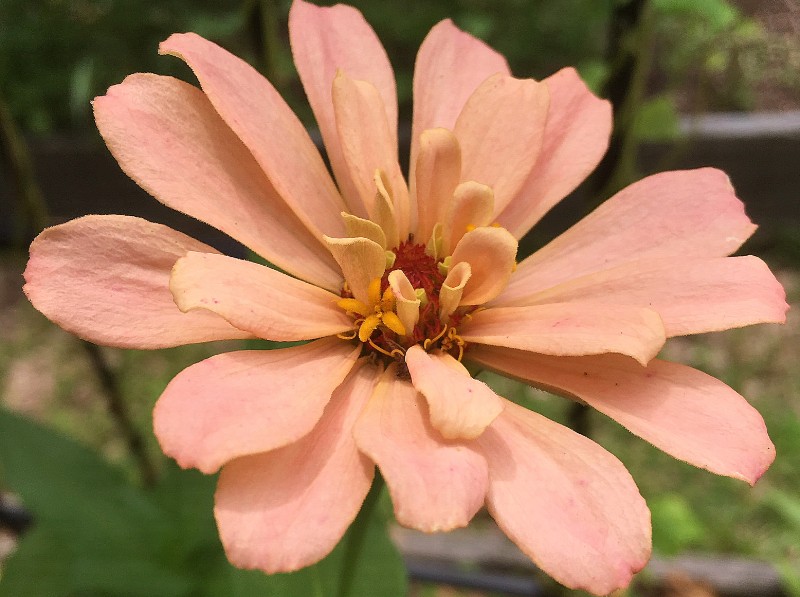


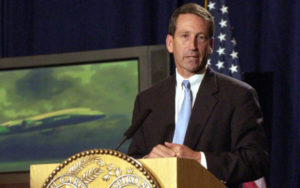


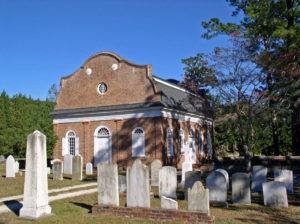
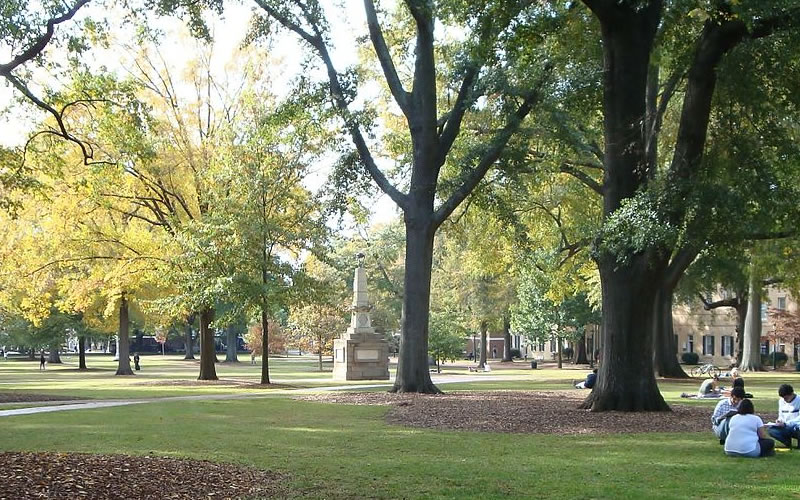

 We Can Do Better, South Carolina!
We Can Do Better, South Carolina!
























